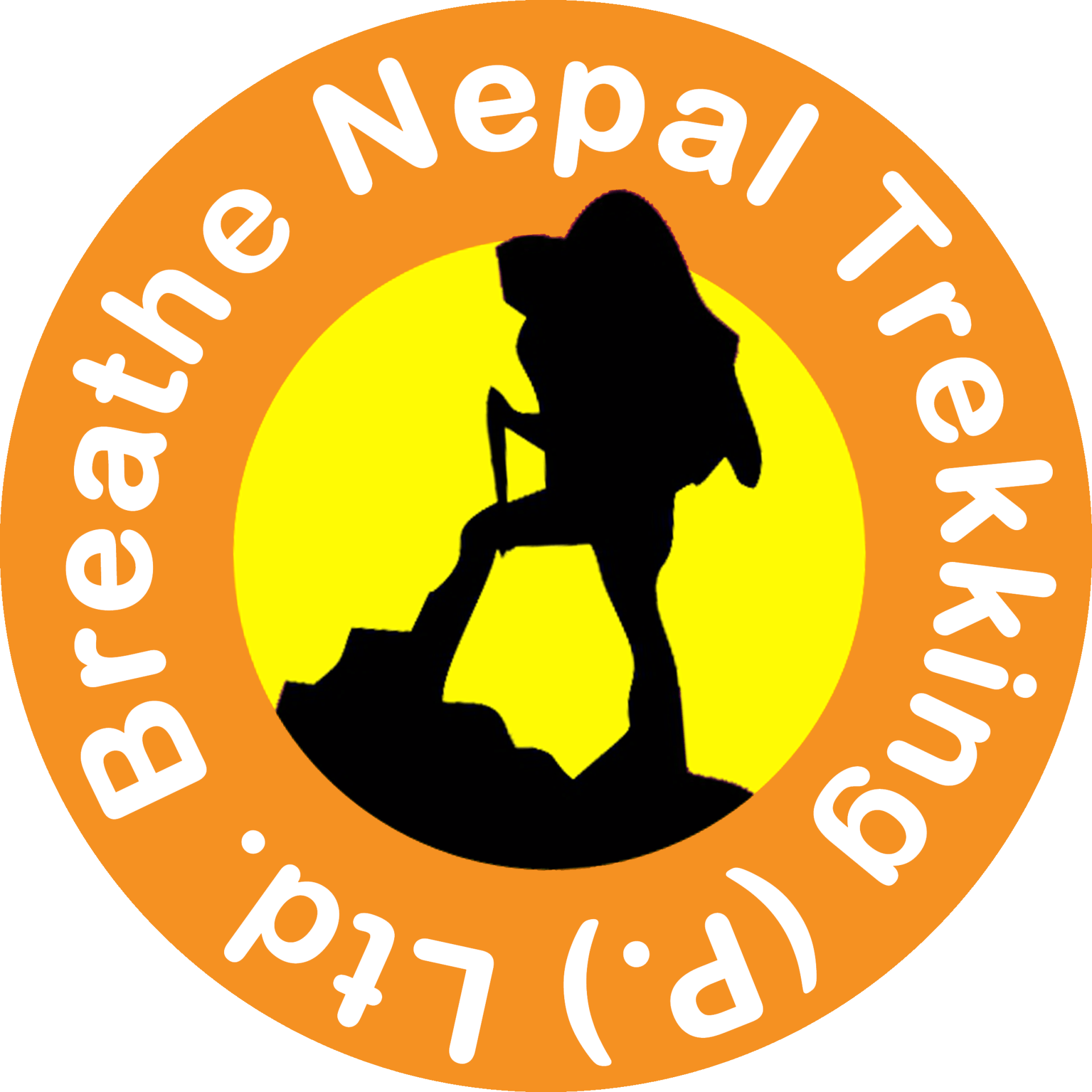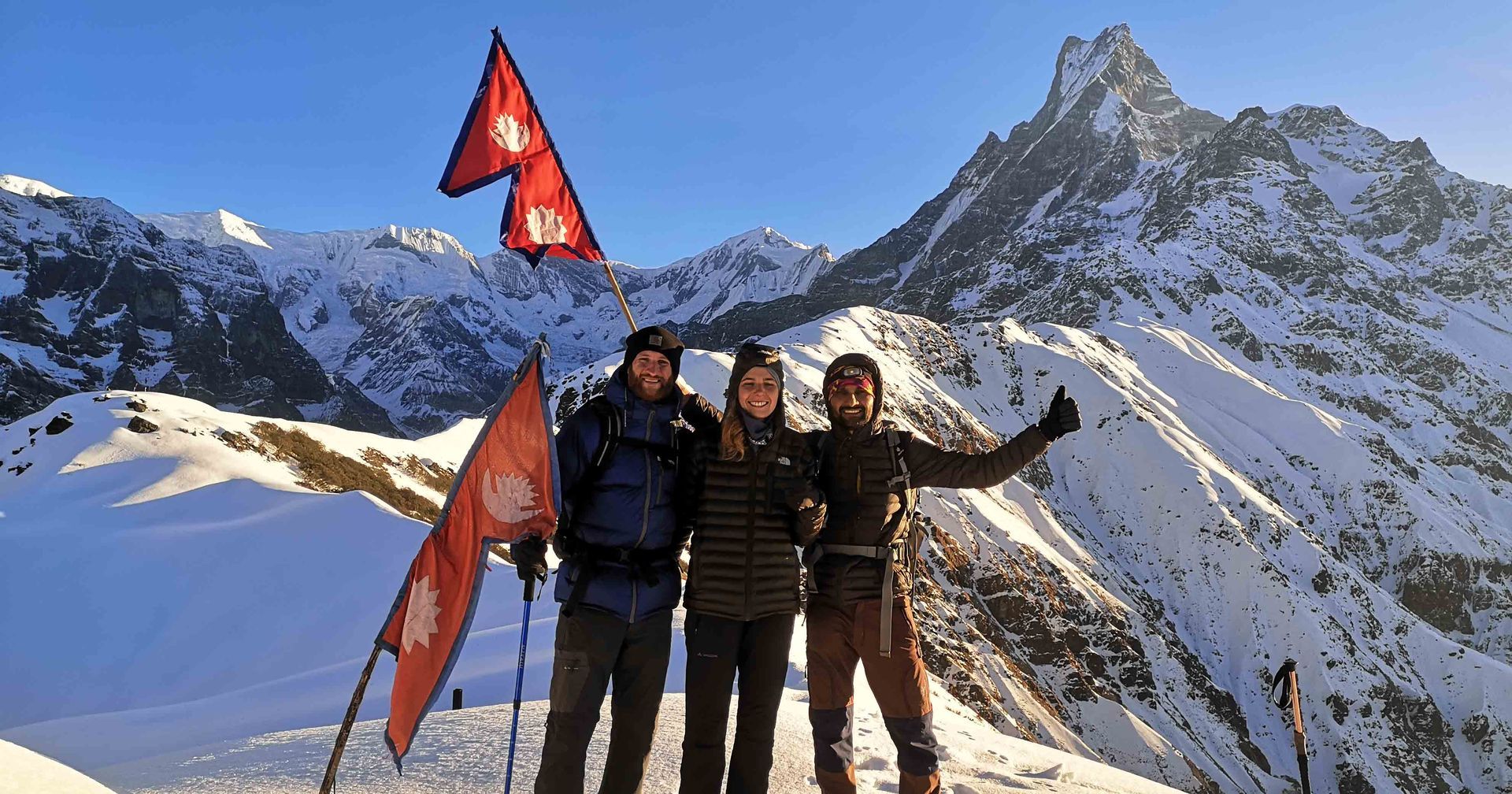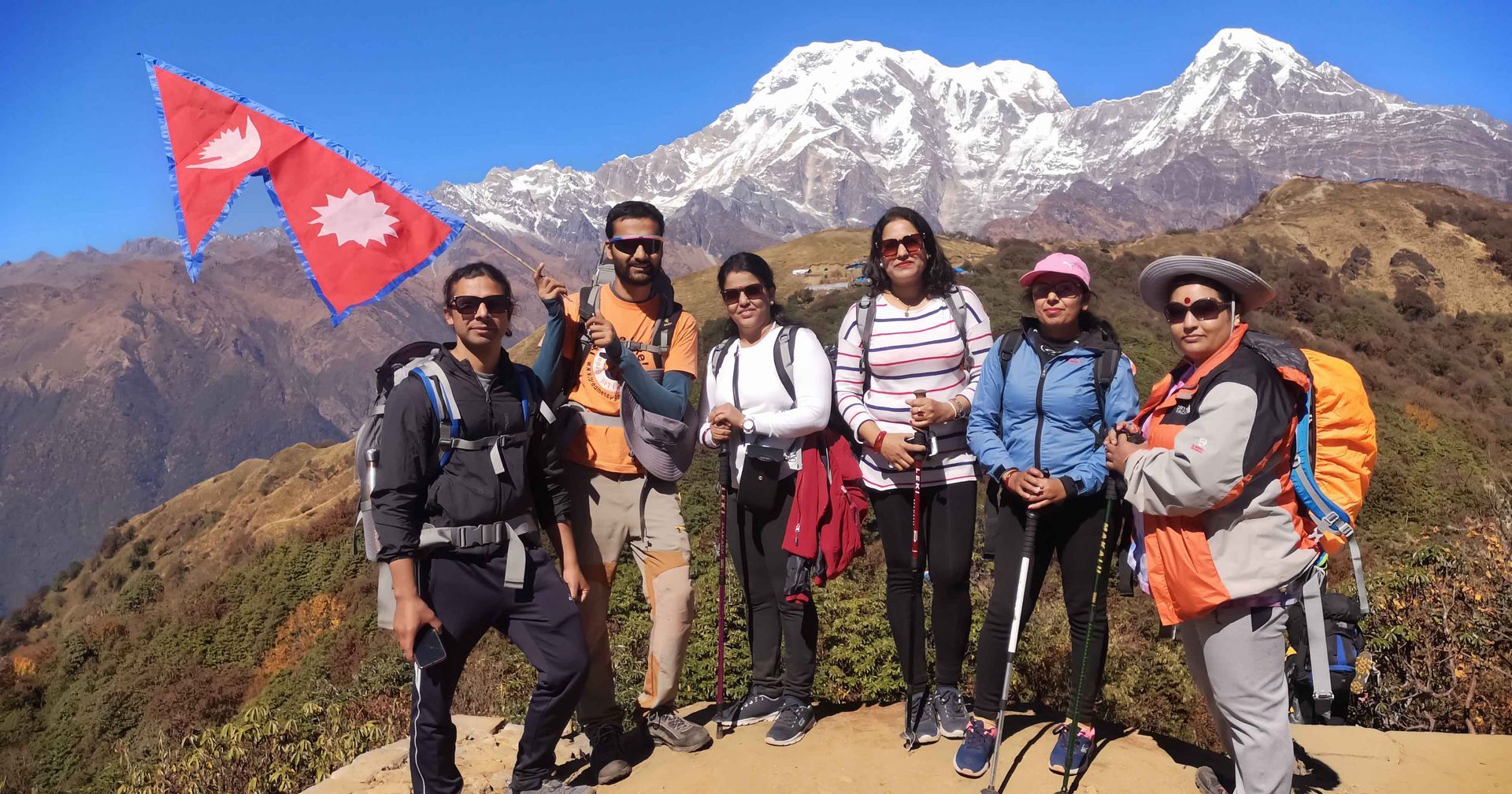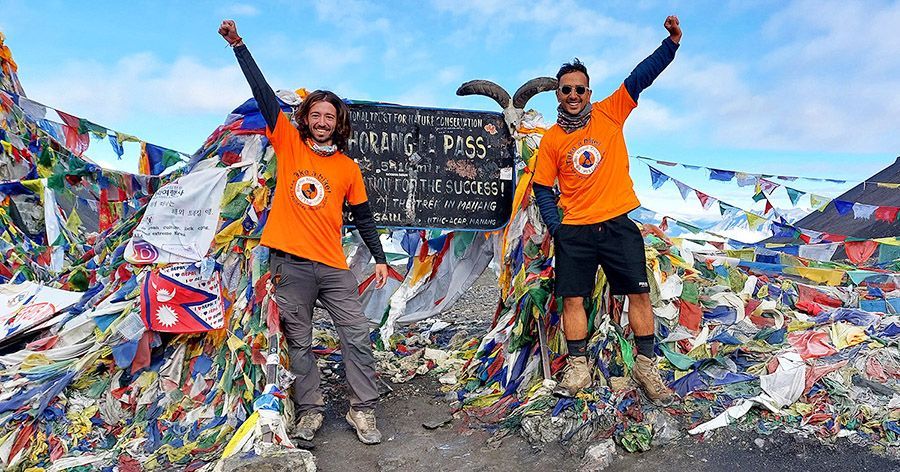Stay Safe On Trek In Nepal
Feb 17, 2023
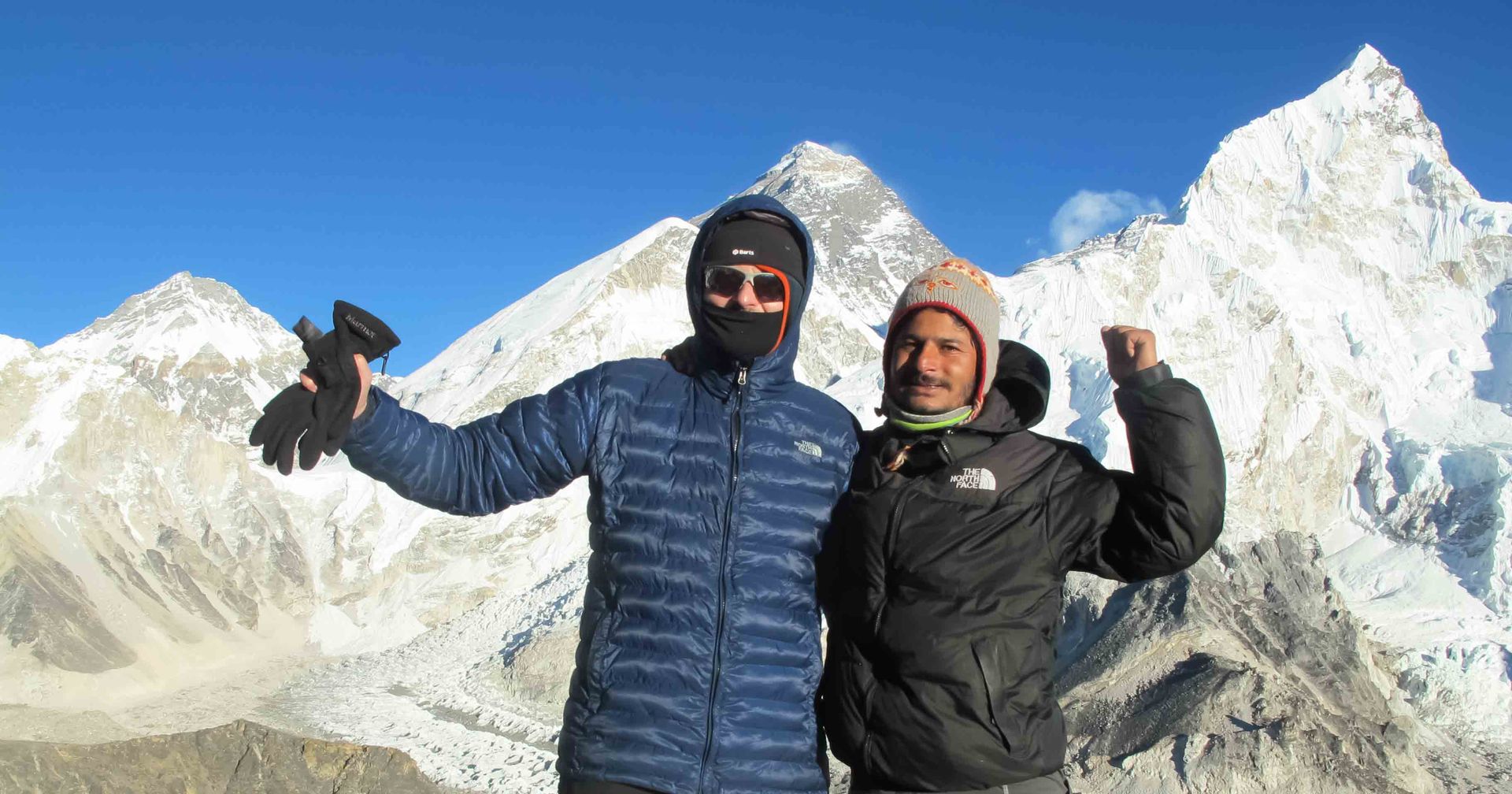
How to Stay Safe and Prepared While Trekking?
Trekking in Nepal is an adventure that requires proper preparation and caution. The terrain can be challenging and the weather unpredictable, making it essential to follow certain safety rules. Here are the most important ones to keep in mind when being on trek in Nepal.
- Hire a guide: A local guide will have knowledge of the area, including the best routes and any potential hazards. They can also provide valuable information on the culture, customs and etiquette of the region.
- Get insured: Make sure you have adequate travel insurance coverage, including emergency evacuation and medical coverage, before starting your trek.
- Pack appropriately: Make sure you pack appropriate clothing and gear, including warm layers, rain gear, sturdy hiking boots, a hat and sunscreen. It is also important to carry enough food and water to last the entire trek.
- Stay on the trail: Stick to the designated trail and avoid taking shortcuts, as it can be easy to get lost and find yourself in dangerous terrain.
- Be aware of altitude sickness: Altitude sickness can occur at high elevations and symptoms can range from mild headaches to severe dizziness and shortness of breath. If you experience any symptoms, stop ascending and seek medical attention immediately.
- Respect the environment: The natural beauty of Nepal is fragile, so make sure to follow Leave No Trace principles and minimize your impact on the environment.
- Stay safe from wildlife: Nepal is home to several dangerous animals, including leopards, bears, and cobras. Do not approach or harass wildlife, and always carry a means of self-defense if you are trekking alone.
- Plan for the weather: The weather can change quickly in Nepal, so it is important to be prepared for rain, snow, and high winds. Check the forecast and adjust your plans accordingly.
- Communicate your plans: Let someone know your plans and estimated time of arrival, and stick to your schedule as much as possible.
By following these safety rules, you can ensure a safe and enjoyable trekking experience in Nepal. Remember to always be mindful of your surroundings and to never take unnecessary risks. Breathe in. Breathe out. Enjoy Nepal.
The Benefits of Hiring a Local Guide
Trekking with a guide in Nepal offers several advantages, especially in case of an emergency. Here are a few of the most important ones:
- Local knowledge: A local guide will have extensive knowledge of the area, including the best routes, potential hazards, and how to respond in case of an emergency. This local knowledge can be invaluable in case of an unexpected situation.
- Safety: A guide will have experience and training in responding to emergencies and can provide first aid, summon help, and provide necessary support. This can greatly increase your safety and chances of survival in case of an emergency.
- Communication: In remote areas, a guide can communicate with local authorities and emergency services, which can be difficult or impossible for someone who doesn't speak the local language.
- Navigation: A guide can help you navigate unfamiliar terrain, reducing the risk of getting lost or wandering into dangerous areas.
- Support: In case of an injury or illness, a guide can provide support and help evacuate you to a hospital or other medical facility if necessary
- Stress reduction: Trekking can be stressful, especially in unfamiliar surroundings. Having a guide can alleviate stress and provide a sense of security, allowing you to fully enjoy your trekking experience
- Cultural sensitivity: Guides are also familiar with the local culture and customs, and can advise on appropriate behavior in case of an emergency.
In conclusion, trekking with a guide in Nepal offers several important advantages, especially in case of an emergency. By having a guide, you can ensure a safe and enjoyable trekking experience and be prepared for any situation that may arise.
Emergency Contact Numbers
When trekking in Nepal, it is important to have emergency contact numbers readily available in case of an emergency. Here are some important numbers to have:
- Tourist Police: 1144 (within Kathmandu valley) / 16600102098 (outside of Kathmandu valley)
- Nepal Police: 100 (general emergency number)
- Ambulance: 102
- Fire Department: 101
- Nepal Army: 1133
- Local Hospital: The number can be obtained from your hotel or local trekking agency.
It is also a good idea to inform your embassy or consulate of your itinerary and keep their contact information on hand in case of an emergency.
In addition, it is recommended to bring a personal communication device, such as a satellite phone or an inReach device, in case of an emergency when trekking in remote areas where cell phone signal is not available.
By having these emergency numbers readily available, you can ensure a quick response in case of an emergency while trekking in Nepal.
